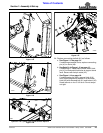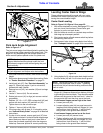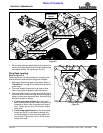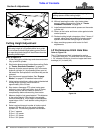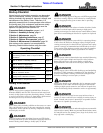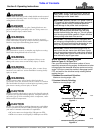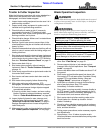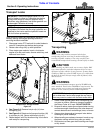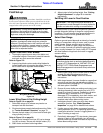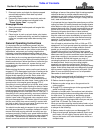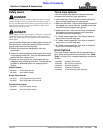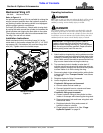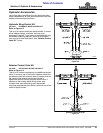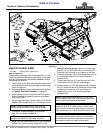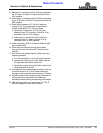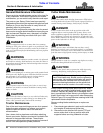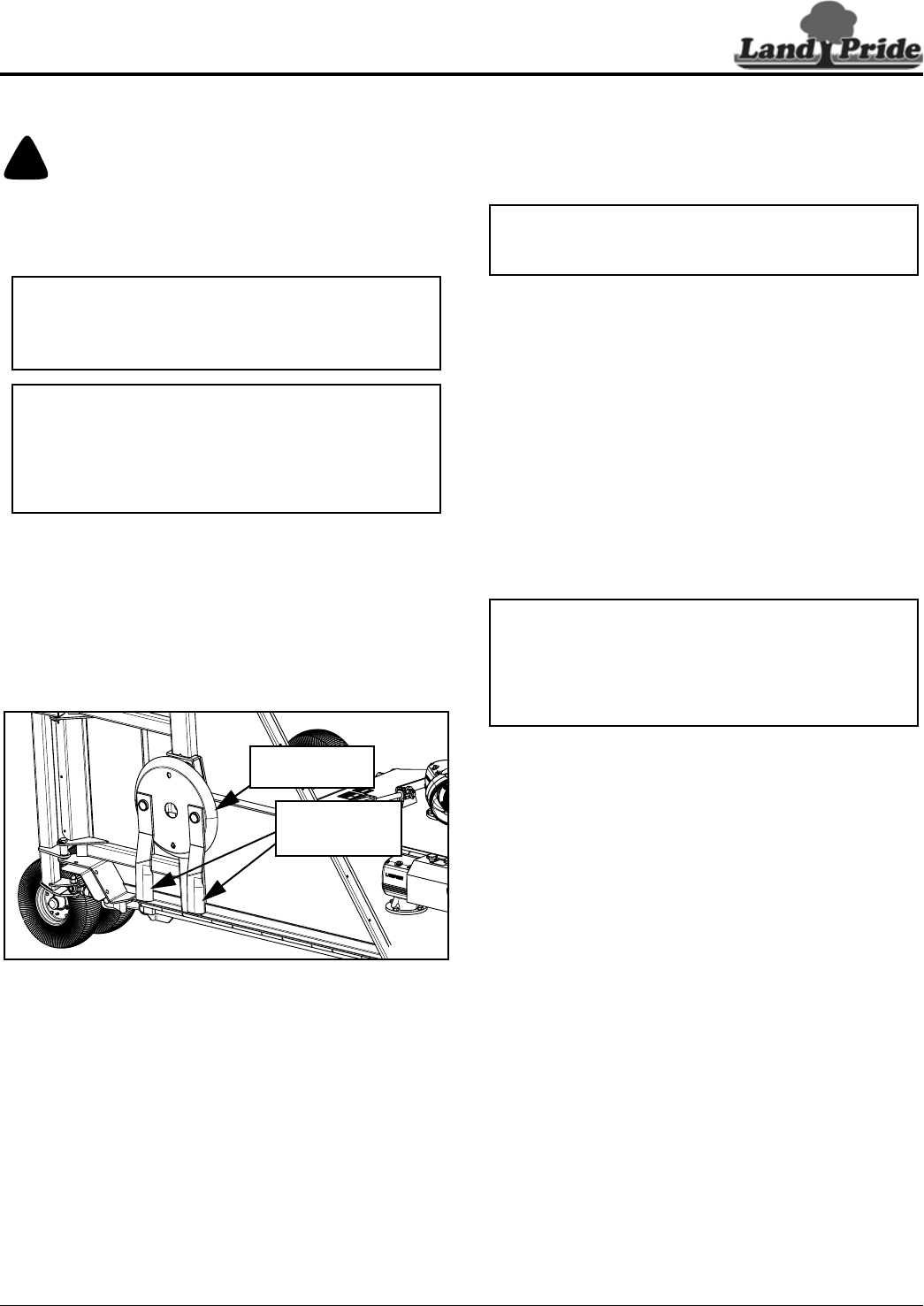
31
Section 3: Operating Instructions
10/21/15
RC4015 and RCM4015 Series 2 S/N 944961+ Rotary Cutters 330-845M
Table of Contents
Field Set-up
!
WARNING
The following operational procedures should be carried out
by the tractor operator. Other persons should not be in the
area. All cutter operations including field set-up should be
stopped when other persons are in the vicinity.
Inspect Field and Cutter Blades
1. Thoroughly inspect area to be cut for debris and
unforeseen objects. Remove all potential hazards
and mark any that cannot be removed.
Refer to Figure 3-5:
2. Inspect wing blade carriers and cutting blades for
locked blades prior to lowering the wings. Use a pry
bar or other tool to separate locked blades.
Wing Deck Blade Positioning
Figure 3-5
Lower Wing Down & Set Cutting Height
Refer to Figure 3-4 on page 30:
1. Raise both wings up to release any tension on
transport lock bar as shown.
2. Shut tractor down properly before dismounting. Refer
to “Tractor Shutdown Procedure” on page 13.
3. Remove hairpin cotters (#1) from both left and right
wing cylinder pins (#4).
Refer to Figure 3-3 on page 30:
4. Rotate end of transport lock bar (#3) up to storage
lug (#2) as shown. Secure with hairpin cotters (#1).
5. Start tractor and lower both wings down.
IMPORTANT: Cutting should not be done in wet
conditions. Wet material will build up on the deck
underside creating need for additional horsepower,
high wear, and poor discharge.
IMPORTANT: Cutting blades may become locked
together (overlapped) when wings are raised for
transport. Operating cutter in this condition will result
in severe deck vibration. Inspect wings for locked
blades prior to power-on operation. Use a pry bar or
other tool to separate blades.
27858
Blade Carrier
Wing Deck
Cutting Blades
6. Adjust cutter to field cutting height. See “Cutting
Height Adjustment” on page 26 for detailed
instructions.
Set Wing Lift Lever In Float Position
Use float position of your tractor’s hydraulic system to
provide automatic floating of wings for varying terrain
conditions. This will ensure wing gauge wheels are in
continuous contact with the ground at all times.
Select Gear Range
Optimum ground speed depends on density of material
being cut, horsepower rating of tractor, and (in some
cases) terrain. Always operate tractor at cutter’s
full-rated PTO speed in a gear range that allows the
cutter to make a smooth cut without lugging the tractor
down, usually between 2 to 5 mph. Loss of PTO speed
will allow blades to hinge back and result in ragged,
uneven cutting.
Engage Blades
1. Select a gear range that will allow cutter to make a
smooth cut without lugging tractor down.
See “Select Gear Range” above for detailed
instructions.
2. With wings lowered, increase throttle to a speed just
enough to get the cutter started without stalling
tractor while slowly engaging PTO. Use tractor’s PTO
soft start option if available.
3. Ensure all power shafts are rotating and cutter is not
vibrating excessively after ramping up to full PTO
speed for at least 3 seconds. If excessive vibration
continues after 3 seconds at full PTO speed,
disengage PTO immediately, shut down tractor, and
remove switch key. Wait for blades to come to a
complete stop before dismounting tractor.
4. Investigate cause if cutter was shut down due to
excessive vibration. See “Blade Operation
Inspection” on page 29 for detailed instructions.
5. If cutter was not shut down, commence forward
cutting operation at full PTO operating speed. Make
a new gear selection if tractor is lugging down or if
cutter is making a rough cut.
6. Periodically, disengage PTO, stop tractor, place gear
selector in park or set park brake, turn off tractor,
remove switch key and wait for blades to stop rotating
before dismounting tractor.
IMPORTANT: The wing folding lever should be in
float position to avoid damage to the wing hydraulic
cylinder and axle while cutting on uneven terrain.
IMPORTANT: Cutter blades can lock-up against
each other during start-up and shut-down especially
if tractor’s PTO engagement is “INSTANT ON” and
“INSTANT OFF”. Follow Blade Engagement and
Blade Disengagement instructions to help eliminate
blade lock up.



